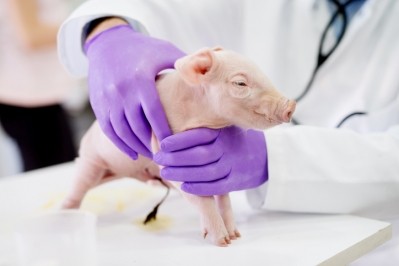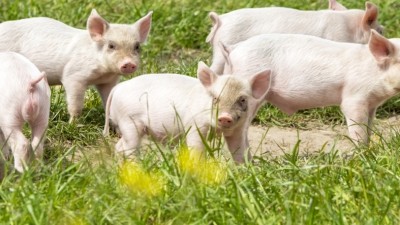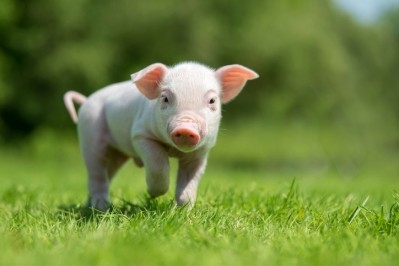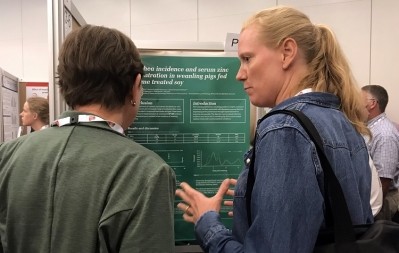Zero use of zinc oxide in EU pig production: Danish researchers are on the case
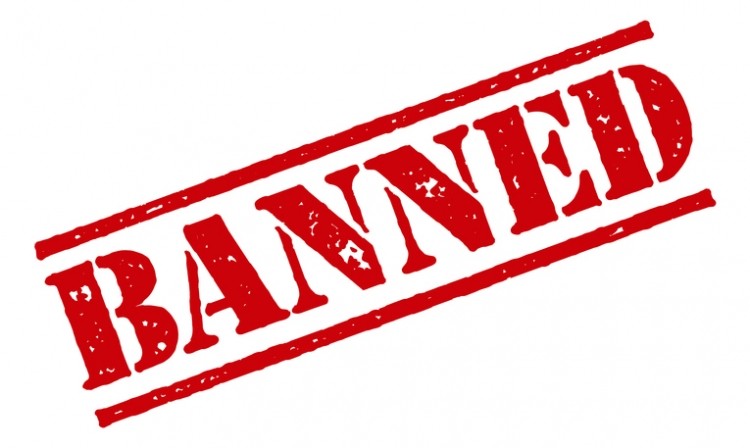
A ban on the use of zinc oxide in feed for weaned pigs in the EU, due to its negative environmental impact, will come into effect in June 2022, so the hunt is on for alternative strategies.
The ban will leave the European pig industry with a dilemma – how to produce 7-30 kg pigs without using therapeutic, high-level zinc oxide at weaning – and without increasing the use of antibiotics to keep pigs free from diarrhea. The removal of zinc oxide comes on the back of EU-wide regulation to reduce copper levels in piglet diets, with copper also providing protection against diarrhea.
The majority of conventional and organic farms in Denmark today use prescription-only zinc oxide in feed for weaned pigs during the first 14 days post-weaning to control E.coli diarrhea. This is said to help lower the frequency of diarrhea outbreaks immediately post-weaning.
Reduced protein diets
Dr Niels Jørgen Kjeldsen, senior consultant, SEGES, told us the team there is trying to come up with viable, practical alternatives given the pending ban. A reduction in protein inclusion levels in the absence of zine oxide is one approach they are considering.
The researchers are half-way through a study looking at the impact of different protein inclusion levels, and they hope to publish their findings in June at the Zero Zinc Summit in Copenhagen.
Much of the literature about reducing protein as a way to tackle the incidence of diarrhea in piglets in zinc oxide free diets typically involves a shift from 23% to 20%, he said. However, good results have been achieved in going as low as 19% in Denmark, added Jørgen Kjeldsen.
“I think going any lower, though, would cost in terms of productivity and I am not sure the effect on diarrhea would be much greater, or certainly not enough to pay for the likely reduction in productivity.”
The SEGES team is also hoping to determine the optimal level of minerals such as calcium or chloride or sodium in a zero zinc oxide formulation, and to ensure the ideal balance of such components in a zinc oxide free diet as well. “But this is only an idea [at this stage]. We might start such a trial after the summer.”
The researchers also want to look at the fiber content as well, but not until next year; they hope to find out what combinations of fibers are required for zero zinc oxide piglet diets.
The zinc replacement trials carried out by the SEGES team always include at least 60 replicates, stressed Jørgen Kjeldsen. “You really need a lot of replicates to conclude on diarrhea.” An approach not always seen in other researchers’ work in this field, he noted.
So while thorough in their attempts to find alternatives, they team are painfully aware of the looming deadline:
“We know we have to finish by 2022. When we got rid of growth promoters, back in 2000, we had the same process. We hope that we can get rid of zinc oxide without that same costly reduction in productivity we saw in Denmark at that time. After the growth promoters stopped, we calculated that there was a loss of around €1 per pig over two years [for Danish farmers]. We want to avoid that this time.”
External zero zinc oxide feeding concepts
Some of the prompts for the future work of the SEGES team in the area of zinc oxide free piglet diets came from the test the center ran on feeding concepts submitted to SEGES by feed additive companies as part of a trial it ran from October 2017 to May 2018,
The center published the results of that trial in September last year. The initiative was about testing new products or products in different combinations and comparing them to zinc oxide, both in terms of their effect on diarrhea and the overall antibiotic use per pig, but also in terms of productivity in the 7-9 kg period and the entire 7-30 kg period.
The trial compared 2,500-ppm zinc oxide (positive control) with 0-ppm zinc oxide (negative control) and with four select concepts to find competitive alternatives to zinc oxide. The trial period lasted from weaning until 30 kg.
Interested parties were invited to submit an application to SEGES describing concepts for feeding of weaned pigs in the 7-30 kg period. Three diets were required, one for each of the periods 7-9 kg, 9-15 kg and 15-30 kg. All products and additives included in the concepts had to be already approved by the EU and available for purchase at the time of application.
Participation in the trial was free for the companies involved.
“The idea of this trial was to find out if there were some solutions out there that could reduce the diarrhea frequency, which, of course, increases when we stop using zinc oxide.
“We told the companies to combine the best ideas and not to focus on price; the first step is to find out if there are solutions available comparable to zinc oxide,” said Jørgen Kjeldsen.
While two of the feeding concepts were deemed effective as zinc oxide alternatives, they were also regarded as way too expensive for use in Danish pig production currently.
The companies were not obliged to provide full disclosure on diet composition, he said.
“However, we do have some idea [of what was working]. The concepts from the two successful applications, Vitfoss and Trouw Nutrition, had a relatively low protein level. Trouw Nutrition’s [formulation] also had a low calcium level, which we already knew could cause a reduction in diarrhea; it had also different compounds included, a combination of organic acids, which we also knew work [in this regard]. We do not know exactly, of course, what is the effect of the different feed additives [in the formulation] such as a slow release C12 or organic acids or phenolic compounds, nor the interactions between them. However, the aim was to show that something works.
“Trouw Nutrition is looking to reduce the price of its concept. It has to make it cheaper as there is no money in pig production right now.”
